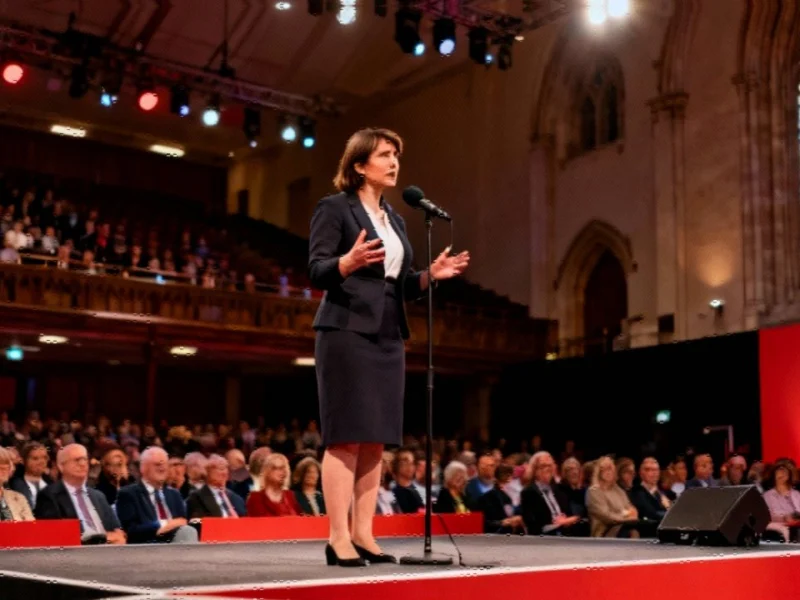Government Considers Fiscal Relief Amid Energy Affordability Crisis
Energy Secretary Ed Miliband has indicated the government is actively examining potential reductions to VAT on energy bills, signaling a possible shift in approach to the ongoing cost-of-living crisis. While stopping short of confirming specific measures ahead of November’s Budget, Miliband acknowledged the administration is “looking at all of these issues” to address what he described as a “longstanding cost-of-living crisis.”
The comments come as millions of households face a 2% increase in energy costs under Ofgem’s latest price cap adjustment, pushing the typical annual bill to £1,755 – an increase of £35 from the previous cap. This continues the trend of elevated energy prices that began with the 2021 spike following Russia’s invasion of Ukraine.
The VAT Reduction Calculus
Eliminating the 5% VAT rate on domestic energy bills would provide modest relief to households, saving the average family approximately £86 annually. However, this measure carries significant fiscal implications, with implementation costs estimated at £2.5 billion per year according to analysis by the charity Nesta.
Miliband’s careful phrasing reflects the government’s balancing act between addressing immediate financial pressure on households and managing what he termed “difficult fiscal circumstances.” The Energy Secretary emphasized that “the whole of the government, including the chancellor, understand that we face an affordability crisis in this country.”
This delicate fiscal situation requires careful consideration of multiple factors, including how various industry developments might influence policy effectiveness.
Broader Energy Policy Overhaul Under Consideration
Beyond VAT adjustments, Chancellor Rachel Reeves has hinted at “targeted action” in her upcoming Budget that may include reducing regulatory levies currently added to energy bills. These “policy costs” – which fund environmental and social schemes including renewable energy subsidies – currently constitute approximately 16% of electricity bills and 6% of gas bills.
The debate around these levies has intensified, with some energy executives attributing rising costs partially to green initiatives. The government’s independent Climate Change Committee has long advocated removing policy costs from electricity bills to help consumers directly benefit from the net-zero transition.
When questioned about alternative funding mechanisms through taxation rather than bill levies, Miliband acknowledged this as “always a judgement for the chancellor” while reiterating the constrained fiscal environment inherited by the current government.
These policy considerations come amid broader market trends in energy infrastructure and pricing that affect both consumers and businesses.
Political Divisions on Energy Strategy
The household energy cost debate has emerged as a significant political fault line, with opposition parties advancing contrasting solutions. Conservatives and Reform UK have pointed to net-zero policies as drivers of higher prices, with the former pledging to scrap the Climate Change Act and associated carbon taxes.
Shadow energy secretary Claire Coutinho claims her party’s alternative approach would reduce electricity bills by 20%, arguing the public isn’t “signing up for much higher bills and jobs being lost to countries abroad.”
Meanwhile, Green Party leader Zack Polanski has advocated for more radical measures, including nationalising energy companies and implementing new carbon emission taxes to accelerate the transition away from fossil fuels. He contends such measures are “vital for tackling the climate crisis” while rejecting concerns about cost pass-through to consumers.
These political debates reflect broader global conversations about energy policy, including related innovations in sustainable technology and regulation.
The Long-Term Energy Security Vision
Amidst these short-term relief discussions, Miliband reiterated the government’s commitment to addressing what he identifies as the root cause of high bills: dependence on fossil fuels. “There is only one route to get bills down, which is to go for clean power, home-grown, clean energy, that we control, so we’re not at the behest of the petrol states and the dictators,” he asserted.
This perspective aligns with Labour’s pre-election pledge to reduce average energy bills by £300 annually by 2030 through accelerated transition to renewable sources. However, the government faces the immediate challenge of balancing this long-term vision with pressing affordability concerns affecting households today.
The complexity of this energy policy landscape requires consideration of multiple technological and regulatory approaches, including examination of recent technology advancements that could influence both energy costs and sustainability.
As the government weighs its options ahead of the November Budget, all eyes will be on how it navigates the competing priorities of fiscal responsibility, immediate consumer relief, and long-term energy security. The UK government’s comprehensive assessment of VAT reduction possibilities represents just one facet of a multifaceted approach to resolving the energy affordability crisis while maintaining progress toward climate objectives.
These energy policy discussions occur alongside other significant industry developments, including technological innovations in modular architecture that demonstrate how flexible design approaches can transform various sectors. Similarly, advancements in Linux kernel development show how foundational technological improvements can create more efficient and responsive systems.
The global context for these decisions continues to evolve, with international financial mechanisms being deployed to address geopolitical challenges, while businesses navigate changing regulatory environments as evidenced by gambling industry responses to economic pressures. Meanwhile, scientific research continues to push boundaries, with new discoveries in gamma-ray astronomy reminding us of the importance of sustained investment in research and development across sectors.
This article aggregates information from publicly available sources. All trademarks and copyrights belong to their respective owners.
Note: Featured image is for illustrative purposes only and does not represent any specific product, service, or entity mentioned in this article.



